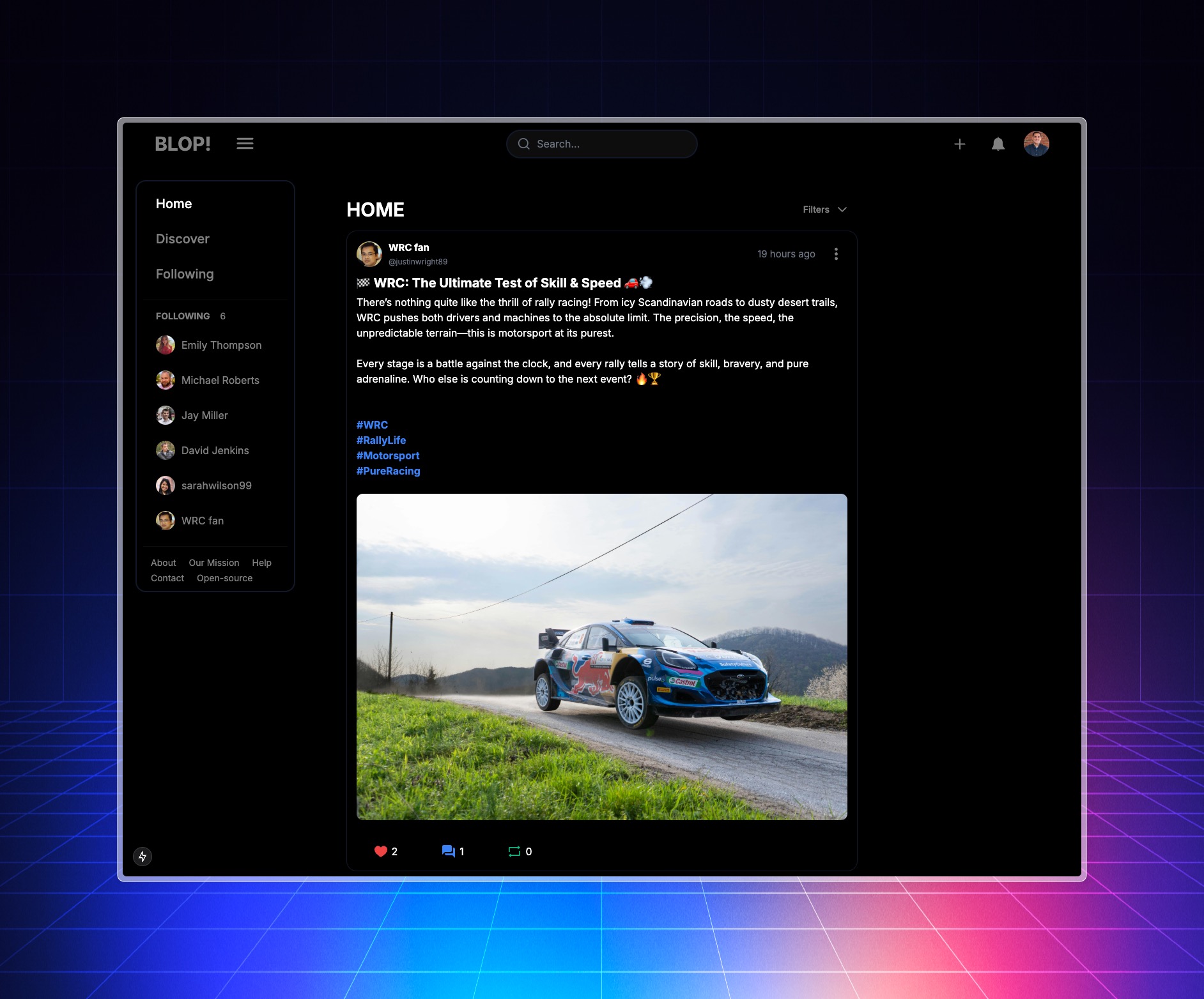Social Network
•9 min read•By Frederik Handberg
Next.js
TypeScript
Prisma ORM
Express
Socket.IO
BLOP is a social network I created as a portfolio project, designed to closely mirror the functionality of modern social media platforms. My goal was to make it as realistic and feature-rich as possible, providing users with an experience they would expect from today's social networks.
